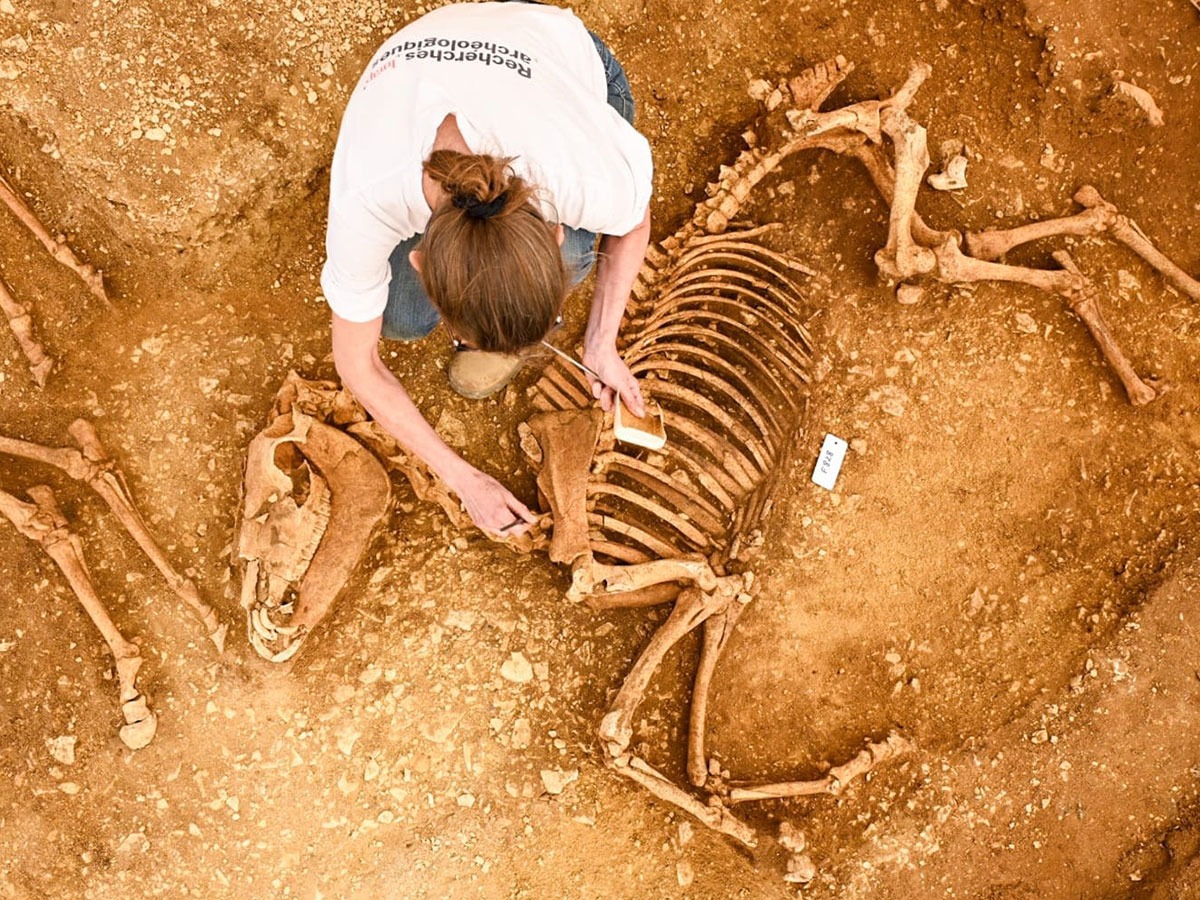
Archaeologists Uncover Ancient Horse Remains Buried for 2,000 Years
Archaeologists in France have uncovered nine graves containing the skeletons of 28 horses that were buried about 2,000 years ago, leaving their precise cause of death a mystery. These graves were found in Villedieu-sur-Indre, a commune in central France, and have been radiocarbon-dated to between 100 BC and 100 AD, according to the French National Institute for Preventive Archaeological Research (INRAP).
Two of the graves have been fully excavated so far, revealing 10 complete horse skeletons in one pit and two in another, all carefully placed on their right flanks with their heads to the south. These horses were buried shortly after their deaths, as indicated by the position of the skeletons and the connections between the bones. Additionally, another grave was found between these two pits containing two medium-sized dogs, both lying on their left sides with their heads facing west.
Archaeologists have yet to fully excavate the remaining graves but have identified a total of 28 horses from the skulls and coxal bones visible on the surface.
Killed in battle, or ritual sacrifice?
The precise cause of death remains unclear, but archaeologists have ruled out an epidemic, noting the absence of foals or mares and the presence of fully-grown stallions aged over four years old. This suggests the horses may have been killed in battle or sacrificed.
The site is near a former fortified Celtic settlement known as an oppidum, suggesting a possible connection to the battles of the Gallic Wars when Julius Caesar conquered Gaul between 58 and 50 BC. Another hypothesis is that these horses were part of a ritual sacrifice. The INRAP statement mentioned that if the horses were sacrificed, the number involved indicates the “importance and extent of the sacrifice.”
Other finds at the site, located on the slope of a valley, include buildings, pits, ditches, and a road dating to the late 5th and early 6th centuries.



